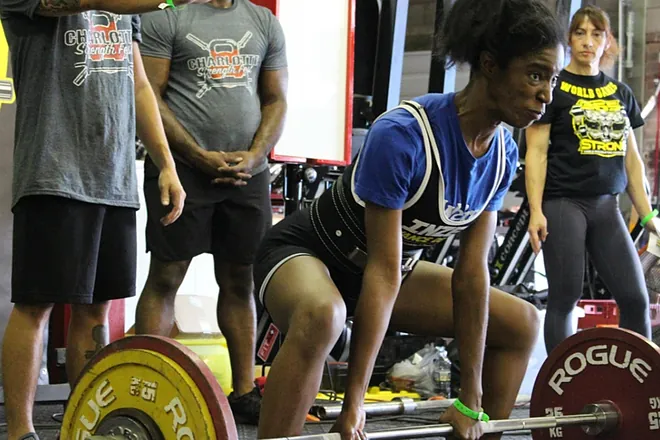- Fasted training isn’t ideal for everyone, but it can be done safely with planning.
- Protein is the most important nutrient to preserve lean muscle mass.
- Short, moderate sessions work better than long, intense workouts when fasted.
- Women need to be extra careful with fasting due to hormonal sensitivity.
- Intermittent fasting (16/8) can be a structured option, but it requires careful nutrition balance.

Fasted training—working out without eating beforehand—has become a popular trend among morning exercisers and intermittent fasting fans. Some swear by it for fat loss, while others see it as a way to feel lighter and more focused during workouts.
But here’s the tension: if you’re not fueling properly, fasted training can put your muscle mass at risk. Without careful planning, your body may start breaking down muscle tissue for energy instead of fat.
To help you understand how to train safely on an empty stomach, we’ve gathered insights from expert trainers, sports nutritionists, and recent studies.
Why Training Fasted Is Controversial
Before diving into solutions, it’s important to understand the risks and potential benefits of skipping food before a workout.
Risks of Fasted Training
- Muscle breakdown (catabolism): Without carbs, your body taps into glycogen stores. If those are depleted, it can use amino acids from muscle protein for energy.
- Performance drop: Low blood sugar can cause sluggishness, dizziness, and reduced strength output.
- Hormonal imbalances in women: Trainers like Lucia Aguado warn that women are more vulnerable to menstrual disruptions, hormonal imbalances, and metabolic stress when consistently training fasted.
- Increased stress response: Fasted training raises cortisol levels, which in excess can hinder recovery and muscle growth.
Possible Benefits
- Improved fat oxidation: Some studies suggest your body may burn a higher percentage of fat during fasted cardio.
- Convenience: Morning exercisers often prefer not eating due to time constraints or stomach discomfort.
- Mental clarity: Some people report sharper focus when training without food.
Fasted training isn’t inherently bad, but it comes with trade-offs. Whether it works depends on your goals, body type, and recovery plan.
The Science: Does Fasted Training Really Burn Muscle?
Research is mixed. Here’s what’s clear from exercise physiology studies:
- Short-term fasting (8–12 hours) doesn’t automatically cause muscle loss if daily protein intake is adequate.
- Long endurance workouts in a fasted state increase muscle protein breakdown.
- Resistance training fasted can still stimulate muscle growth, provided post-workout protein is consumed quickly.
- Women’s physiology tends to be more sensitive to low energy availability than men’s, meaning long-term fasted training carries greater risk for them.
According to the Journal of the International Society of Sports Nutrition, the key determinant isn’t the fasted state itself, but whether total daily nutrition (protein and calories) meets the body’s needs.
Nutrition Strategies for Protecting Muscle
If you train on an empty stomach, the way you plan meals around workouts is non-negotiable.
1. Prioritize Protein Every Day
- Aim for 1.6–2.2 grams of protein per kilogram of body weight daily.
- Spread protein across 3–5 meals/snacks, not just one big serving.
- Best sources: lean meats, eggs, Greek yogurt, tofu, beans, and protein powders.
2. Load Carbohydrates at Dinner
Your body stores carbs as glycogen—fuel for workouts. If you train fasted in the morning:
- Dinner should include complex carbs: rice, oats, whole grains, sweet potatoes.
- Pair with lean protein for balanced recovery.
- Avoid alcohol and excessive fats before bed, which slow recovery and glycogen storage.
3. Recovery Nutrition Is Essential
- Post-workout meal within 60 minutes: fast-digesting protein + carbs.
- Examples: whey shake with a banana, eggs with toast, or Greek yogurt with berries.
- This helps stop muscle breakdown and jumpstart repair.
4. Hydration and Electrolytes
- Even mild dehydration reduces performance.
- Drink water before and during your workout.
- For longer or sweat-heavy sessions, consider electrolytes.
Training Adjustments to Minimize Muscle Loss
Training intensity and structure matter as much as nutrition.
Recommended Approaches:
- Duration: 30–45 minutes for fasted sessions.
- Intensity: Stick to moderate strength training or steady cardio.
- Frequency: 2–3 fasted workouts per week, not daily.
- Listen to signals: Fatigue, dizziness, or irritability = poor recovery.
Avoid:
- Long-distance endurance runs while fasted.
- High-volume bodybuilding sessions without fuel.
- Consecutive days of intense fasted training.
Intermittent Fasting and Muscle Mass
One structured way to combine fasting and training is intermittent fasting (16/8 method).
- 16 hours fasting → only water, black coffee, or tea.
- 8-hour eating window → balanced meals with protein, carbs, and healthy fats.
Benefits of 16/8 for Athletes:
- Helps control calorie intake.
- Can improve insulin sensitivity.
- Easier to plan meals around training.
Risks:
- Women may experience greater hormonal stress.
- Hard to fit in adequate protein if you eat only 2 meals.
- Not suitable for people with certain medical conditions.
👉 Trainers recommend experimenting cautiously and consulting a professional before adopting fasting long-term.
Sample Meal Plans for Fasted Training
Dinner Before Training (fuel reserves):
- Grilled chicken + quinoa + roasted vegetables.
- Salmon + sweet potato + spinach salad.
- Tofu stir-fry with brown rice.
Post-Workout Recovery:
- Whey shake + banana.
- 2 eggs + avocado toast.
- Greek yogurt + berries + granola.
Daily Structure for 16/8 Fasting:
| Time | Action | Example |
|---|---|---|
| 7 AM | Fasted workout | 40-min strength session |
| 8 AM | Water + electrolytes | Optional coffee |
| 11 AM | First meal | Eggs, oats, berries |
| 3 PM | Balanced lunch | Chicken, rice, veggies |
| 7 PM | Dinner | Salmon, quinoa, greens |
| 8 PM | Eating window closes | Hydration only |
Example Workouts for Fasted Training
Strength-Focused (30–40 minutes)
- Warm-up: 5 min mobility
- Squats – 4×8
- Push-ups or bench press – 4×8
- Dumbbell rows – 4×10
- Core circuit (planks + leg raises) – 3 rounds
Cardio-Focused (25–30 minutes)
- Warm-up jog – 5 min
- Steady-state run/cycle – 15–20 min
- Cool-down stretch – 5 min
👉 Keep volume lower than your fueled workouts to avoid excessive breakdown.
Expert Tips from Trainers
- Lucia Aguado (fitness trainer): Women should be especially cautious; risk of hormonal disruption is real.
- iO GENIX Nutrition: Protein intake (1.6–2.2 g/kg/day) is key to preserving lean muscle mass during fasting.
- Sports dietitians: Carbohydrate loading at dinner helps fuel glycogen reserves for morning fasted sessions.
Common Myths About Fasted Training
- “You’ll burn more fat if you train fasted.”
Not necessarily. While fat oxidation is higher, overall fat loss depends on calories in vs. calories out. - “Fasted workouts always cause muscle loss.”
Not if protein intake is sufficient and sessions are kept moderate. - “It’s better for everyone.”
Not true—many people perform better fueled, and women may face extra health risks fasting too often.
If you love morning workouts but don’t want to eat beforehand, you don’t have to give up your gains. With smart nutrition, shorter workouts, and careful protein planning, you can train on an empty stomach without sacrificing muscle mass.
But remember: the best approach depends on your body. If you notice fatigue, menstrual changes, or stalled progress, consider adjusting your plan—or talk to a sports nutritionist for tailored advice.






